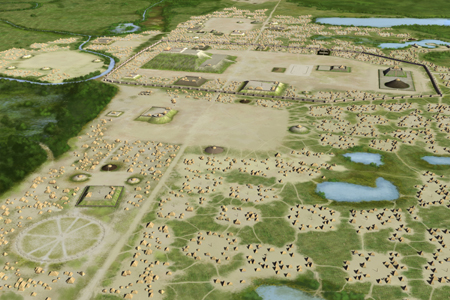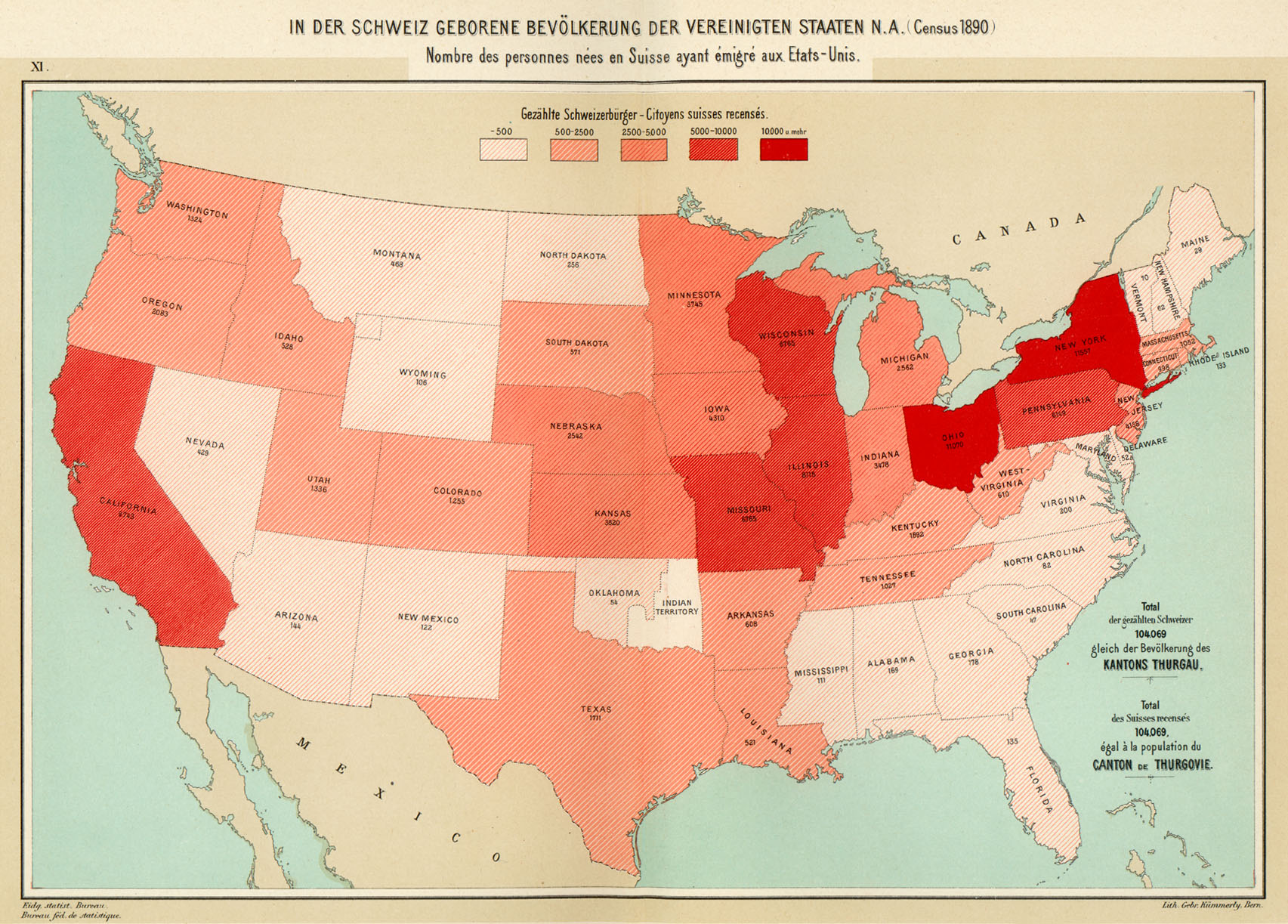|
Journey To New Switzerland
''Journey to New Switzerland'' (original German title: ''Reisebericht der Familie Köpfli & Suppiger nach St. Louis am Mississippi und Gründung von New Switzerland im Staate Illinois'' ursee, 1833 by Joseph Suppiger, Salomon Koepfli, and Kaspar Koepfli is the travel account of member of the two German Swiss families to St. Louis and the subsequent founding of New Switzerland, a locality surrounding and including Highland, Illinois during 1831-1833. The book covers the families' journey from Sursee to Le Havre, thence by sea to New York, and on by river to St. Louis in the form of a diary kept by Joseph Suppiger, Jr. Letters from New Switzerland to relatives in Switzerland tell about the land and culture encountered as well as the particular area settled: "But you still do not know what a heavenly area we have found in which to settle. ...t is a{{convert, 450, acre, km2, sing=on farm twenty-seven miles east of St. Louis, consisting mostly of woods," purchased for "the exceedingly ... [...More Info...] [...Related Items...] OR: [Wikipedia] [Google] [Baidu] |
New Switzerland
New Switzerland is an unincorporated community in Habersham County, in the U.S. state of Georgia. History A post office called New Switzerland was established in 1882, and remained in operation until 1889. The community was named after Switzerland ). Swiss law does not designate a ''capital'' as such, but the federal parliament and government are installed in Bern, while other federal institutions, such as the federal courts, are in other cities (Bellinzona, Lausanne, Luzern, Neuchâtel ..., the native land of a large share of the first settlers. References Swiss-American history Unincorporated communities in Habersham County, Georgia Unincorporated communities in Georgia (U.S. state) {{HabershamCountyGA-geo-stub ... [...More Info...] [...Related Items...] OR: [Wikipedia] [Google] [Baidu] |
Highland, Illinois
Highland is a city in Madison County, Illinois, United States. The population was 9,991 at the 2020 census. Highland began as a Swiss settlement and derived its name from later German immigrants. Highland is a sister city of Sursee in Switzerland. Highland, because it is located in Madison County, Illinois, is a part of the Metro-East region of the Greater St. Louis metropolitan area. History Highland, Illinois was settled in the early 19th century by Swiss-German settlers. The town was founded in 1837 and celebrated its 175th Jubilee in 2012. It was first named Helvetia (pronounced hellveesha) in accordance with the Heritage of the town's Swiss-German founding members. The town voted to change its name to the English version - Highland, in the early 20th century, as well as stopping production of its German language newspaper, in part to avoid negativity towards those of Germanic heritage at the advent of the First World War. Around the same time, a small town in northern Illin ... [...More Info...] [...Related Items...] OR: [Wikipedia] [Google] [Baidu] |
Sursee
Sursee is a municipality in the district of Sursee in the canton of Lucerne, Switzerland. Sursee is located at the northern end of Lake Sempach, not far from where the ''Sure'' (or ''Suhre'') river exits the lake ("See"), hence the name "Sursee". History The shores of Lake Sempach have been inhabited since the Neolithic. Sursee municipality is home to the Halbinsel prehistoric pile-dwelling (or stilt house) settlement that is part of the Prehistoric Pile dwellings around the Alps UNESCO World Heritage Site. Halbinsel was settled a number of times during the Neolithic and Bronze Age. At Zellmoos in the Halbinsel site, the bottom layer is from the Cortaillod culture while there are several Late Bronze Age layers above it. There are three Late Bronze Age layers at Gammainseli. The Zellmoos sites were discovered in 1806 and excavated in 1902, 1941, 1991 and 2005. The Bronze Age sites featured several houses with clay floors. A number of ceramic, bronze, bone, stone and flint it ... [...More Info...] [...Related Items...] OR: [Wikipedia] [Google] [Baidu] |
Le Havre
Le Havre (, ; nrf, Lé Hâvre ) is a port city in the Seine-Maritime department in the Normandy region of northern France. It is situated on the right bank of the estuary of the river Seine on the Channel southwest of the Pays de Caux, very close to the Prime Meridian. Le Havre is the most populous commune of Upper Normandy, although the total population of the greater Le Havre conurbation is smaller than that of Rouen. After Reims, it is also the second largest subprefecture in France. The name ''Le Havre'' means "the harbour" or "the port". Its inhabitants are known as ''Havrais'' or ''Havraises''. The city and port were founded by King Francis I in 1517. Economic development in the Early modern period was hampered by religious wars, conflicts with the English, epidemics, and storms. It was from the end of the 18th century that Le Havre started growing and the port took off first with the slave trade then other international trade. After the 1944 bombings the firm of Auguste ... [...More Info...] [...Related Items...] OR: [Wikipedia] [Google] [Baidu] |
Duden
The Duden () is a dictionary of the Standard High German language, first published by Konrad Duden in 1880, and later by Bibliographisches Institut GmbH. The Duden is updated regularly with new editions appearing every four or five years. , it is in its 28th edition. It is printed as twelve volumes, with each volume covering different aspects of the German language such as loanwords, etymology, pronunciation, synonyms, etc. The first of these volumes, ' (English: The German orthography), has long been the prescriptive source for Standard High German spelling. The Duden has become the preeminent language resource of the Standard High German language, stating the definitive set of rules regarding grammar, spelling and use of Standard High German language. History Konrad Duden's Schleizer Duden (1872) and Urduden (1880) In 1872, Konrad Duden, then headmaster of a ' (secondary school), had his treatise ''Die deutsche Orthoschrift'' (“German orthography”) published by B.G. Te ... [...More Info...] [...Related Items...] OR: [Wikipedia] [Google] [Baidu] |
Report On A Journey To The Western States Of North America
A report is a document that presents information in an organized format for a specific audience and purpose. Although summaries of reports may be delivered orally, complete reports are almost always in the form of written documents. Usage In modern business scenario, reports play a major role in the progress of business. Reports are the backbone to the thinking process of the establishment and they are responsible, to a great extent, in evolving an efficient or inefficient work environment. The significance of the reports includes: * Reports present adequate information on various aspects of the business. * All the skills and the knowledge of the professionals are communicated through reports. * Reports help the top line in decision making. * A rule and balanced report also helps in problem solving. * Reports communicate the planning, policies and other matters regarding an organization to the masses. News reports play the role of ombudsman and levy checks and balances on the ... [...More Info...] [...Related Items...] OR: [Wikipedia] [Google] [Baidu] |
Diaries
Diaries may refer to: * the plural of diary *''Diaries: 1971-1976'', a 1981 documentary by Ed Pincus *'' Diaries 1969–1979: The Python Years'', a 2006 book by Michael Palin *''OFW Diaries ''OFW Diaries'' is a Philippine television documentary show broadcast by GMA Network. Hosted by Kara David, it premiered on March 13, 2009 replacing ''Emergency''. The show concluded on January 14, 2011 with a total of 104 episodes. It was repla ...'', a public affairs television show in the Philippines See also * {{disambiguation ... [...More Info...] [...Related Items...] OR: [Wikipedia] [Google] [Baidu] |
Books About The United States Written By Foreigners
A book is a medium for recording information in the form of writing or images, typically composed of many pages (made of papyrus, parchment, vellum, or paper) bound together and protected by a cover. The technical term for this physical arrangement is ''codex'' (plural, ''codices''). In the history of hand-held physical supports for extended written compositions or records, the codex replaces its predecessor, the scroll. A single sheet in a codex is a leaf and each side of a leaf is a page. As an intellectual object, a book is prototypically a composition of such great length that it takes a considerable investment of time to compose and still considered as an investment of time to read. In a restricted sense, a book is a self-sufficient section or part of a longer composition, a usage reflecting that, in antiquity, long works had to be written on several scrolls and each scroll had to be identified by the book it contained. Each part of Aristotle's ''Physics'' is called a bo ... [...More Info...] [...Related Items...] OR: [Wikipedia] [Google] [Baidu] |
History Of Illinois
The history of Illinois may be defined by several broad historical periods, namely, the pre-Columbian period, the era of European exploration and colonization, its development as part of the American frontier, its early statehood period, growth in the 19th and 20th centuries, and contemporary Illinois of today. Pre-Columbian era Cahokia, the urban center of the pre-Columbian Mississippian culture, was located near present-day Collinsville, Illinois. Several burial mounds and adobe structures were created in Southern Illinois across the Mississippi River from St. Louis. A gigantic mound, known as Monks Mound near Cahokia, is about the same height from its base as the Pyramid of Giza. Built around 1050 AD by an immense marshaling of human labor, this huge earth-work faced the site of a palisaded city that contained more than one hundred small artificial mounds marking burial sites. This Mississippi valley city of Cahokia is estimated to have had a population of about 16000 to 2000 ... [...More Info...] [...Related Items...] OR: [Wikipedia] [Google] [Baidu] |
German-American Culture In Illinois
German Americans (german: Deutschamerikaner, ) are Americans who have full or partial German ancestry. With an estimated size of approximately 43 million in 2019, German Americans are the largest of the self-reported ancestry groups by the United States Census Bureau in its American Community Survey. German Americans account for about one third of the total population of people of German ancestry in the world. Very few of the German states had colonies in the new world. In the 1670s, the first significant groups of German immigrants arrived in the British colonies, settling primarily in Pennsylvania, New York and Virginia. The Mississippi Company of France moved thousands of Germans from Europe to Louisiana and to the German Coast, Orleans Territory between 1718 and 1750. Immigration ramped up sharply during the 19th century. There is a "German belt" that extends all the way across the United States, from eastern Pennsylvania to the Oregon coast. Pennsylvania, with 3.5 mill ... [...More Info...] [...Related Items...] OR: [Wikipedia] [Google] [Baidu] |
Swiss-American History
Swiss Americans are Americans of Swiss people, Swiss descent. Swiss emigration to America predates the formation of the United States, notably in connection with the persecution of Anabaptism during the Swiss Reformation and the formation of the Amish community. In the 19th century, there was substantial immigration of Swiss farmers, who preferred rural settlements in the Midwestern United States, Midwest. Swiss immigration diminished after 1930, although limited immigration continues. The number of Americans of Swiss descent is nearly one million. The Swiss Federal Department of Foreign Affairs reported the permanent residency of Swiss nationals in the United States as 80,218 in 2015. According to the U.S. Census Bureau, 26,896 individuals born in Switzerland declared that they were of Swiss ancestry in 2015. According to the U.S. Census Bureau, 3,047 individuals born in Switzerland declared that they were of German ancestry in 2015. According to the U.S. Census Bureau, 1,255 in ... [...More Info...] [...Related Items...] OR: [Wikipedia] [Google] [Baidu] |
.jpg)





